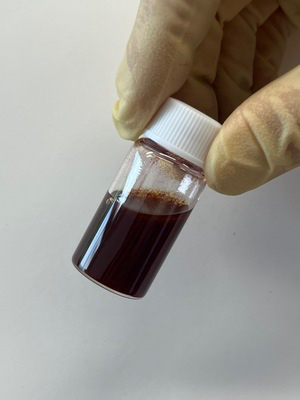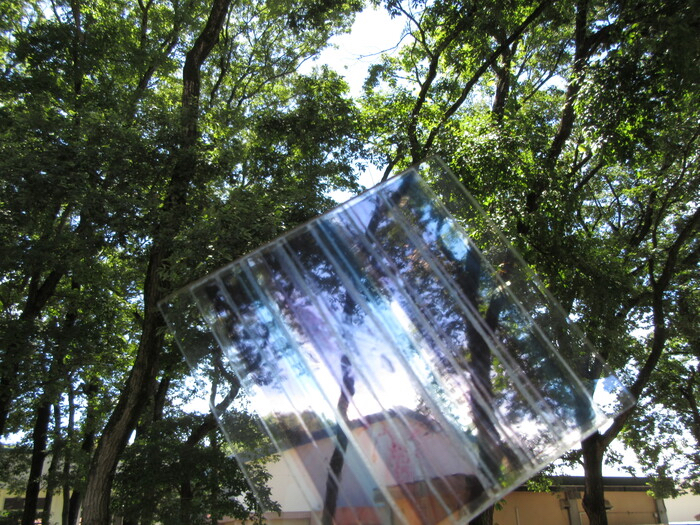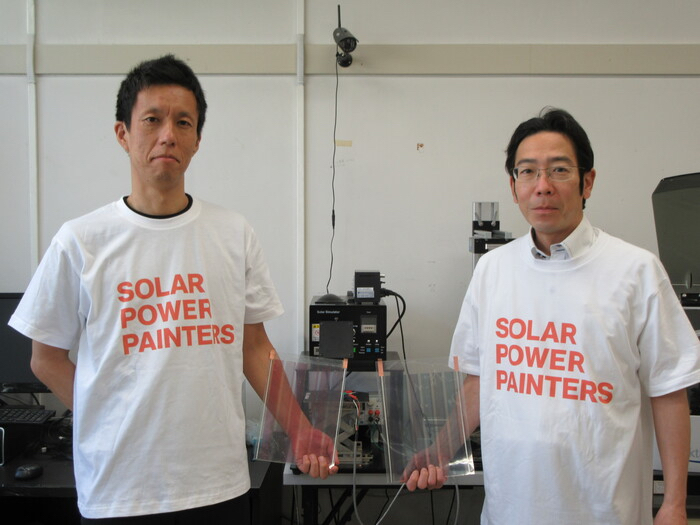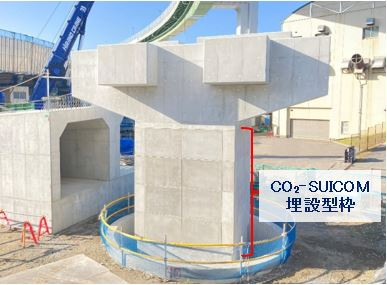J-STORIES ー 栃木県小山市のベンチャー企業が、塗るだけですべてのものを太陽光発電パネルに変える特殊塗料を独自に開発した。鉛などの有害物質を使わず、環境負荷をかけずに廃棄やリサイクルを可能にするなど、自社だけの技術を武器に5年後の事業化に向け準備を進めている。
このベンチャー企業は、今年3月に小山市で創業したソーラーパワーペインターズ。下山田さんが同じ小山高専出身の研究者、加藤岳仁さん(同高専機械工学科教授)と共同で設立。加藤さんの特許技術をもとにした発電塗料(商品名:「発電インク」)を開発した。
現在普及している太陽光パネルは、固くて重いシリコンなどの半導体を使っており、製造コストなどがかさむ上、設置場所も限られる。有機半導体の溶媒を使った「塗る太陽電池」はこうした難点を克服、設備投資コストを1/10に抑えることができる次世代のエネルギー技術として、大手企業や大学などが研究を競っている。

同社の「発電インク」は、現時点では、4種類のインクを塗った素材の表面にさらに保護剤としてもう1種類のインクを塗布する必要がある。今後の事業展開として、同社は太陽光発電の素材となるフィルムやガラス、布を扱う企業向けに発電インクを提供、塗布したうえで太陽光パネルとなったそれらの製品を一般向けに売り出したいとしている。
発電インクを事業化するうえでの大きな課題は、発電性能の向上だ。シリコンを使う従来の太陽光パネルが変換効率15〜20%なのに対し、現在の発電インクの変換効率は3%程度と劣る。製品化を目指すうえで変換効率を7%に上げたいとしている。

「発電インク」の開発は、2011年の東日本大震災による深刻な停電、途上国で見た電力のない生活の悲惨さ、さらには農業を通じて実感した電力供給の重要さなど、下山田さんや加藤さんの自らの体験がきっかけになった。発電インクの開発には、電力を安定供給する技術を通じて人々の暮らしに安心を届けたい、という思いがある。
将来の事業について、下山田さんはJ-Storiesの取材の中で、「現在主流となっているシリコンを基板に使う太陽光パネルなどに取って代ろうとは考えていない」と語り、高性能ではなくても多くの人が簡単に利用できる発電システムをめざす考えを示した。
さらに、様々な発電システムの良さを活かしながら、「世界中の人が分け隔てなく使える電気を作りたい」「電気を使うことに不平等、不公平のない世の中にしていきたい」などと抱負を語っている。

記事:澤田祐衣 編集:北松克朗
トップ写真:puhimec / Envato
この記事に関するお問い合わせは、 jstories@pacificbridge.jp にお寄せください。
***
***
本記事の英語版は、こちらからご覧になれます。





_bigthumbnail.jpeg)














![[PODCAST] 如何打造成功的新創企業社群(第2集)](https://storage.googleapis.com/jstories-cms.appspot.com/images/1748493203370business-man-holding-light-bulb-social-network-2024-10-31-22-37-36-utc_smallthumbnail.jpg)


